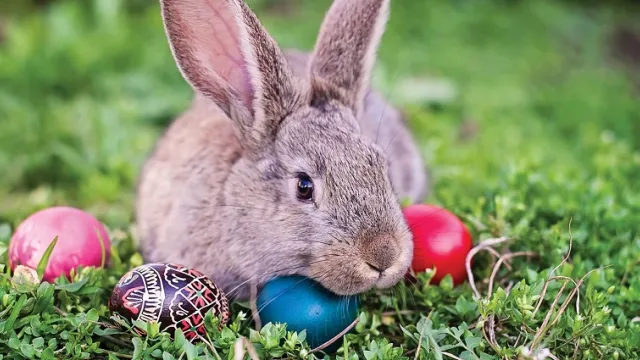Symbolism and Easter

Symbolism and Easter
According to the Gospel accounts of the Bible, the narrative of Jesus' death takes place in Jerusalem in the evening before he died, which we call, Nisan 14. When the time came, he broke bread and drank from the cup. The bread signified his body and the cup with the wine symbolised his blood. The symbolism was centred around how the human race was about to be brought back from sin and get saved.
This simple ritual has been kept for years, transforming through the ages of the complex Christian histories in the way it is observed and symbolised.
Over the years, Christians have made sure they kept up with this special memorial. This simple commemoration has changed most noticeably between the three main branches of Christianity.
Sometime around the 10th Century, there was a great schism in the church. Schism refers to a split or separation. This occurred due to religious disagreements and political conflicts. The Eastern Orthodox split from the Roman Catholic church in 1054 while the Protestants branched out later in the 1500s.
The base teachings and relevance for this special occasion has endured across the different factions of the Christian religion mainly because it is the basis on which Christianity is found. On the miracle of resurrection and hope for eternal life when Christ will return.
However, in practice, differences emerge on how Easter is celebrated in what bordered as markers of religious identity. While the Roman Catholics use unleavened bread, the Eastern Orthodox on the other hand use leavened bread that symbolically represents Christ’s body. The protestants differ within their many denominations as they are more liberal as to what practices may constitute that special day.
Protestants adopted the custom of associating a rabbit or bunny with Easter in Europe during the 17th Century. However, it became more common during the 19th Century. They adapted this variation as a way of rejecting the Catholic way of celebrating Easter. The rabbit or bunny represents fertility and therefore bringing forth of a new life. Just like Jesus did to the human race.
Eastern Orthodoxy went a step further with the eggs painting them red to symbolise the blood Jesus shed. They also celebrate their Easter on later dates after the Roman Catholics and protestants.
The Roman Catholic faithful fast and engage in charity activities during Easter.
In religion, symbolism is used to convey meaning in relatable terms and Easter carries with it its fair share. What holds true though is the consistency of the belief behind it. Christ is the ultimate sacrifice who triumphed over death so that we may live.



